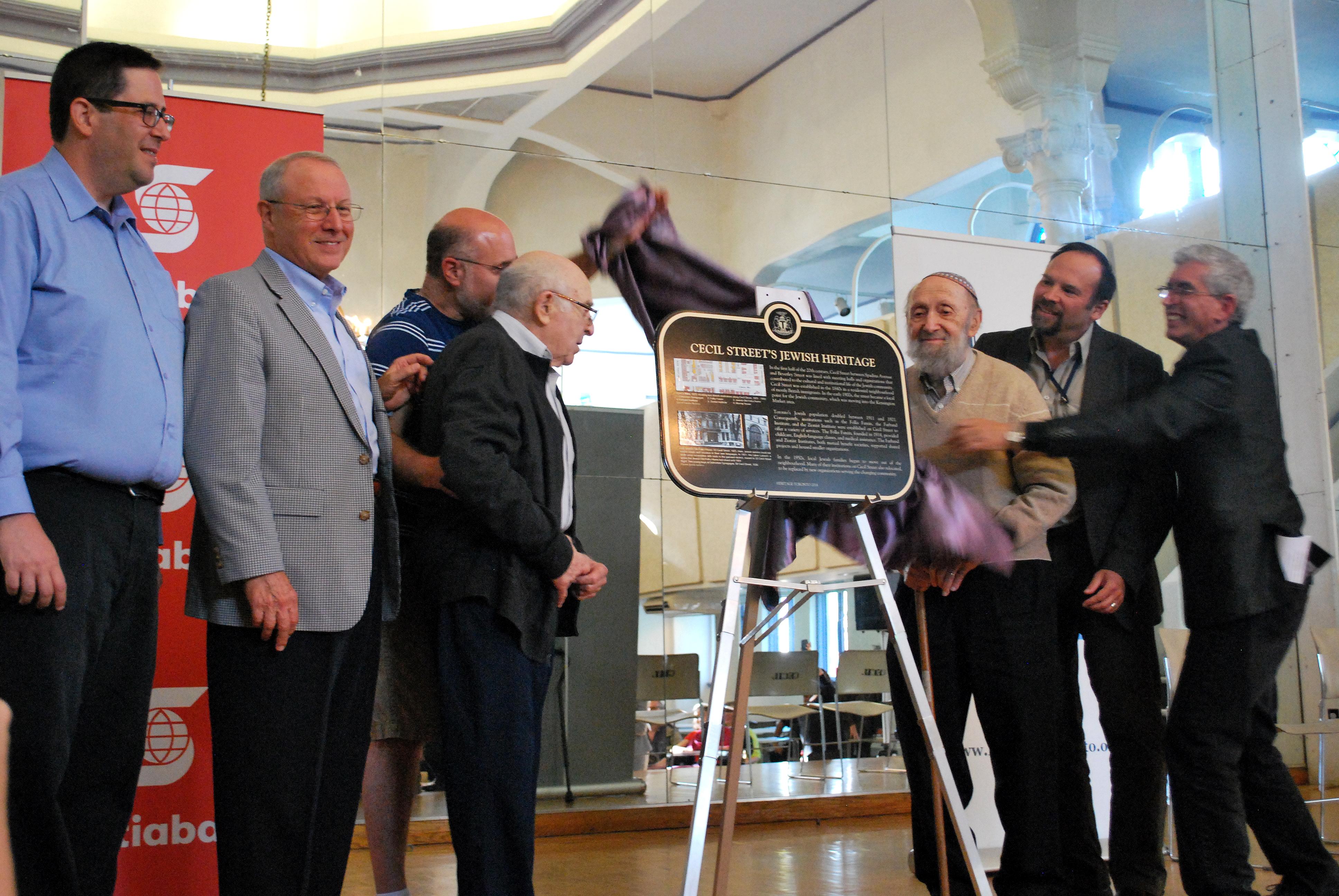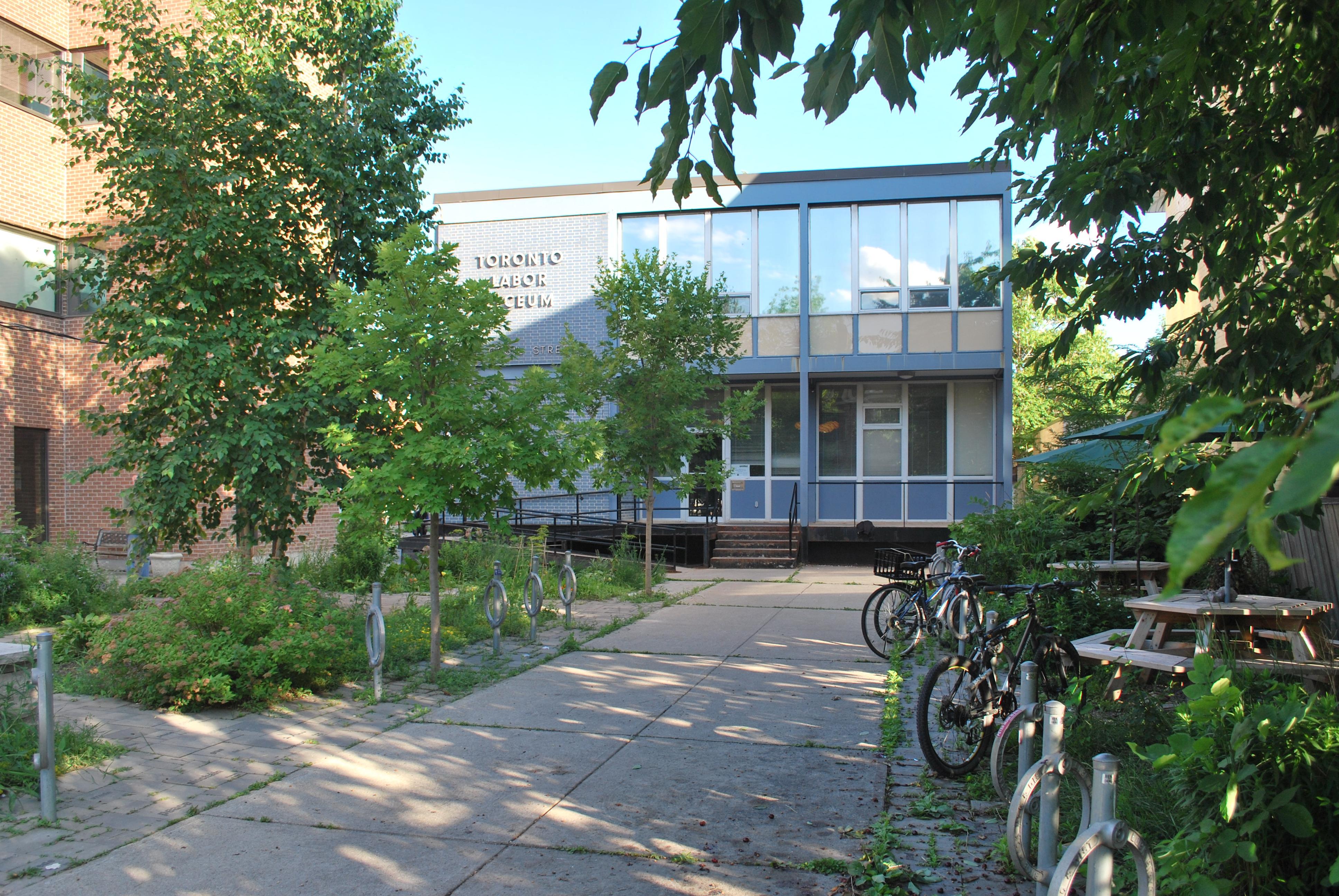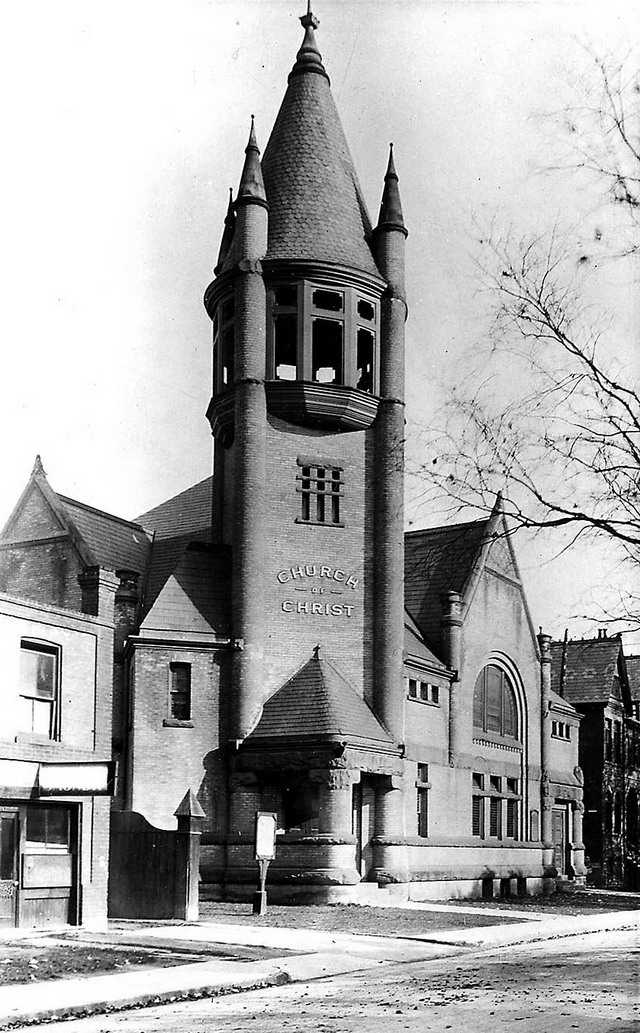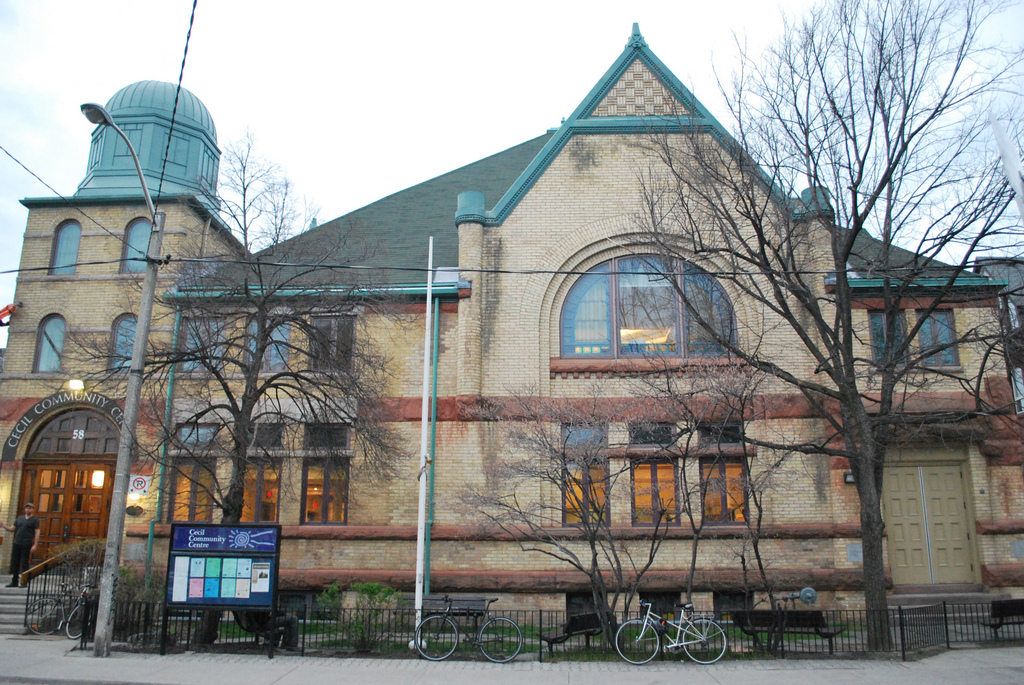Heritage Toronto and the Ontario Jewish Archives unveiled a plaque on Wednesday commemorating the history of institutions on Cecil Street, located just east of Spadina Avenue and south of College Street. The street was established in the 1840's within a neighbourhood of British immigrants and later developed into a vibrant Jewish community. Many Jewish families began moving into the Kensingston Market neighbourhood in the 1900's and Cecil Street became a focal point within the community, with many Jewish institutions beginning to line the street.
 The plaque is officially unveiled, image by Marcus Mitanis.
The plaque is officially unveiled, image by Marcus Mitanis.
The plaque was unveiled by Adam Nelson of Scotiabank, along with Eric Slavens of the Ontario Jewish Archives and Brent Pearlman of Heritage Toronto. Also participating in the unveiling were Dr. Gordon Perlmutter, Gurion Hyman, and their sons Philip Perlmutter and Dr. Avy Hyman. One of the archival photos featured on the plaque depicts Dr. Perlmutter and Gurion Hyman as young boys standing outside the Ostrovtzer Synagogue in 1938. Both grew up in the neighbourhood and founded their local businesses here, as Pelmutter became a dentist and Hyman operated his family bookstore on Spadina Avenue. Their families and stories are indicative of the many people who settled in the area as the cultural composition of the street continued to change.
 The unveiled commemorative plaque, image by Marcus Mitanis.
The unveiled commemorative plaque, image by Marcus Mitanis.
Between 1911 and 1921, the Jewish population in Toronto doubled and a pressing need for services developed. To accommodate the influx of new residents, in 1914, the Folks Farein was established. The institution provided childcare, English classes and medical care to the community. Smaller community organizations began to develop as well and were housed within the Zionist and Farband institutes, both located on Cecil Street.
 The Jewish Old Folks Home before its demolition in 1954, Image courtesy of Heritage Toronto.
The Jewish Old Folks Home before its demolition in 1954, Image courtesy of Heritage Toronto.
Shortly afterward in 1918, the Jewish Old Folks Home was founded and provided kosher meals and the opportunity for Jewish residents to converse in their own language. The Jewish Old Folks Home would later become Baycrest Hospital and relocate to their current home on Bathurst Street south of Wilson in North York. Sadly, the old semi-detached building which housed the facility was demolished in 1954 and the Labour Lyceum, a trade union association, moved in to a new space built at 33 Cecil Street.
 The site of the demolished Old Folks Home, currently the Labour Lyceum, image by Marcus Mitanis.
The site of the demolished Old Folks Home, currently the Labour Lyceum, image by Marcus Mitanis.
The plaque dedication ceremony was held inside the Cecil Community Centre, formerly known as the Church of Christ when it was erected in 1891. It was converted into the Ostrovtzer Synagogue in the 1920's and renovated to reflect its new purpose, complete with a brass chandelier and marble tablets, which remain in place today. The tall steeple and bell tower were removed and replaced with a dome, a feature typically found in synagogue design.
 The Church of Christ as depicted in 1912. Image by William James, courtesy of City of Toronto Archives.
The Church of Christ as depicted in 1912. Image by William James, courtesy of City of Toronto Archives.
The synagogue moved in the 1950's as Chinatown began shifting westward towards Spadina. It then became a Chinese Catholic centre and later, the first home of the Community Homophile Association of Toronto. The building sat derelict for years until the City of Toronto bought 58 Cecil Street, restored it, and used the space for community purposes as it remains today.
 South view of 58 Cecil Street as it stands today, image by Marcus Mitanis.
South view of 58 Cecil Street as it stands today, image by Marcus Mitanis.
Though the ceremony was indoors, the plaque will be permanently located on the east side of the Cecil Community Centre, adjacent to the existing laneway running alongside the building. Cecil Street, a place that has experienced not only substantial architectural change but also cultural shifts, can be compared to many Toronto streets undergoing transformation today. Just as Cecil Street has been recognized for its contributions to the history of Toronto, perhaps other notable streets in the city will be recognized in the same way in the future.
To learn more about Heritage Toronto's events and programs, visit their official website.
Do you have any stories to tell about Cecil Street? Are you going to visit the plaque in person? Let us know by leaving a comment in the field below.

 3.4K
3.4K 









































